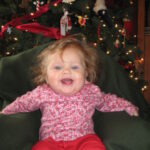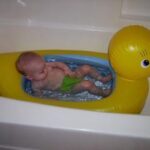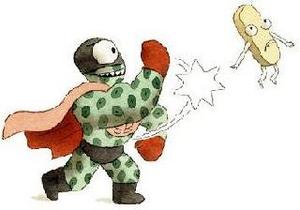There is no worse feeling than watching your toddler struggle to achieve a good night’s sleep. Many new parents just assume that their little guy is not a good sleeper and resign themselves to the fact that there are a lot of sleepless nights in their future, but make sure you rule out serious sleep disorders before you decide your toddler is just a light sleeper. In the following paragraphs I will discuss three common sleep disorders for toddlers and more importantly what you can do to help them through the night.
One of the more common sleep disorders toddlers can face is the night terrors. These go beyond simple bad dreams and can literally scare you half to death. Any parent who has been woken up by a piercing scream at three o’clock in the morning will tell you there is simply nothing that is more frightening. Night terrors are characterized by a child waking up, usually in the first third of the night, accompanied by a scream and physical manifestations of fear. The symptoms are increased heart rate, irregular breathing, and sweating. It may take a minute for your child to remember who you are and this can be the most terrifying part of the entire ordeal. Most research suggests that night terrors will resolve on their own over time. With that being said giving medical advice online is a dangerous game and I would recommend speaking to your pediatrician about your toddlers difficulty sleeping.
A second common sleep disorder amongst toddlers are irregular sleep patterns. Some nights the toddler can sleep right though while other nights will be a constant litany of waking and sleeping. Lack of sleep is a serious problem and should be addressed as soon as possible. This type of sleep disorder is not the same as the nightly battles we all have with our kids over bedtime, but is characterized by waking from a sound sleep many times throughout the night. The best treatment for irregular sleep patterns is to attempt to make the other activities related to sleeping as regular as possible. You should establish the same bedtime, the same, bath time, and avoid playing with your toddler for up to a half an hour before bed. If these problems persist you should see your pediatrician for advice.
The third, and most dangerous, form of sleep disorder that can afflict your toddler is sleep apnea. Sleep apnea is a serious medical condition that is often first diagnosed by snoring. Don’t be alarmed if your child does snore because not all people who snore have sleep apnea; it is simply an indicator that there may be a problem. Sleep apnea is a condition in which the person is not getting adequate oxygen while they sleep. It is most common in children between the ages of 2-5, but can strike at any age. If you suspect your child may have sleep apnea discuss this with your physician immediately as sleep apnea can lead to very serious problems. The primary treatment for sleep apnea is to fit your child with a CPAP machine. The CPAP maintains a continuous positive airway pressure for your toddler. The machine essentially forces air into the lungs when the sleep apnea attack is occurring.
As with all the medical concerns you have when raising your toddler discuss them with your pediatrician.




